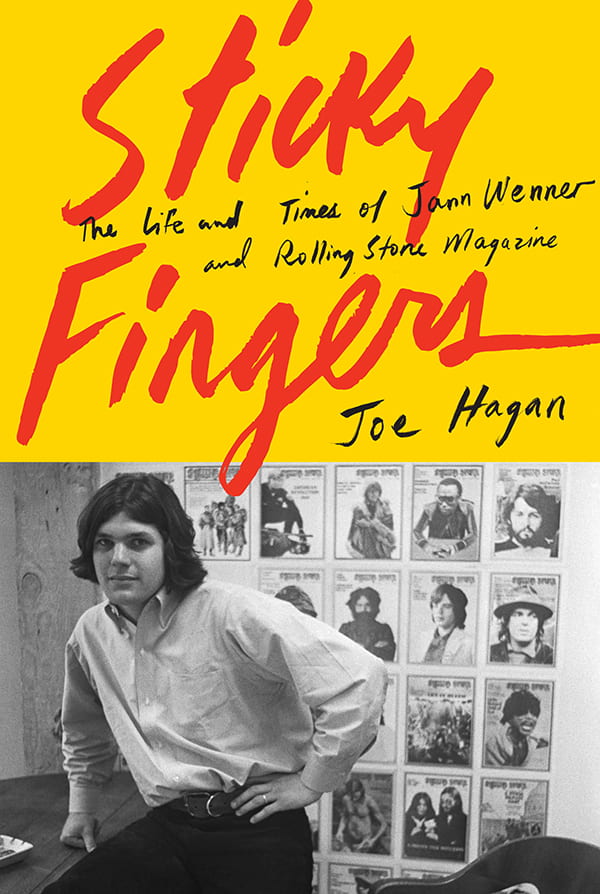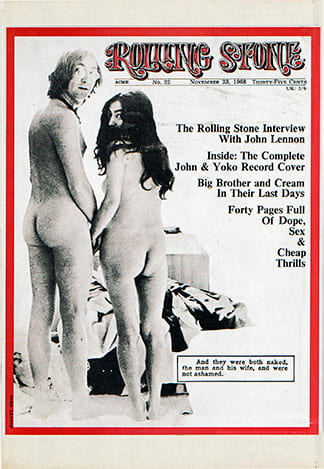
Joe Hagan
A veteran journalist, Hagan is a writer and contributing editor of “New York” magazine, and has written for “The Wall Street Journal,” and “Rolling Stone Magazine,” as well as a host of other publications. He has published long-form profiles and investigative exposes of some of the most significant figures and subjects of our time, among them: Hillary Clinton after serving as Secretary of State; Karl Rove, the Bush family, Henry Kissinger, Dan Rather, Goldman Sachs, “The New York Times”; and Twitter.
On November 9, 1967, a scrappy little paper that celebrated the ‘60s youth culture by flaunting a lifestyle fueled by sex, drugs and rock-and-roll, hit the newsstands. It was christened Rolling Stone Magazine, and from the outset, it was clear this was a radical departure from fanzines like Tiger Beat.
For half a century, the genius behind “Rolling Stone Magazine,” the young, ambitious Jann Wenner, had his finger on the pulse of the American zeitgeist, and he used the magazine to climb the ladder to fame for himself, and then to bestow that mantle on his favorite people. As the magazine’s popularity grew, Wenner became a fame maker and the arbiter of the new “authenticity,” and helped guide the “Me Generation” in all its narcissistic glory.

In his well-researched book, “Sticky Fingers: The Life and Times of Jann Wenner and Rolling Stone Magazine,” published in October 2017, biographer Joe Hagan outlines their intertwined histories and explains its widespread influence on American culture.
Hagan will be joined on stage by Jeffrey McCune Jr, associate professor of Women, Gender, and Sexuality Studies, and of African and African-American Studies, both in Arts & Sciences. McCune’s research encompasses popular culture, masculinity, critical/race/gender/sexuality theory, performance studies, queer theory, contemporary African-American literature, communication, and culture and media.
“The book really traces the arc of a generation as it goes from youthful revolution to establishment takeover.”
In today’s bare-it-all culture, it’s important to remember how shocking it was to pick up a copy and see a naked John and Yoko on the cover of its one-year anniversary issue. Inside that issue was the in-depth interview, another staple, in which Lennon bares his soul (and cuts Paul McCartney to pieces.)
Over the half-century of its existence, Rolling Stone evolved with the times, morphing into a chronicle of the culture for the masses, becoming famous for the stories told by famously-irreverent writers like “gonzo journalist” Hunter S. Thompson and others who made politics sexy, and filled with the glamorous photography of Annie Leibowitz and Richard Avedon.
Throughout the decades, within its pages, one could read an interview with a rock legend like Mick Jagger, Bob Dylan, or John Lennon, then catch up on the latest news sensation, like the Patty Hearst kidnapping, or read about a sensation of its own making, like the takedown of MTV.

It was a magazine that made celebrities of its writers, but above all, it made a celebrity of its creator, Jann Wenner. As Hagan notes in the book, this is a tale of one man’s extreme ambition to attain the same dizzying heights as the people profiled in his magazine; a man so intoxicated by the wealth and privilege of people around him that he became ruthless, betraying those who trusted him in pursuit of his own fame and power.
For anyone who has read a review of the book, it will come as no surprise that Wenner is unhappy with the end result, for this is a serious work of narrative journalism, not a sanitized portrait, and it is, ultimately, the study of a complicated man with a complicated personal history. That said, “Sticky Fingers” is chock-full of riveting, funny and scintillating anecdotes involving house-hold names, from the likes of John Belushi and Michael Douglas to Ralph Lauren and the Kennedys.
A veteran journalist, Hagan is a writer and contributing editor of “New York” magazine, and has written for “The Wall Street Journal,” and “Rolling Stone Magazine,” as well as a host of other publications. He has published long-form profiles and investigative exposes of some of the most significant figures and subjects of our time, among them: Hillary Clinton after serving as Secretary of State; Karl Rove, the Bush family, Henry Kissinger, Dan Rather, Goldman Sachs, “The New York Times”; and Twitter.